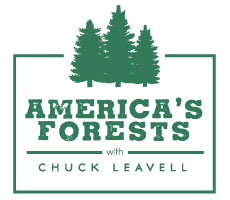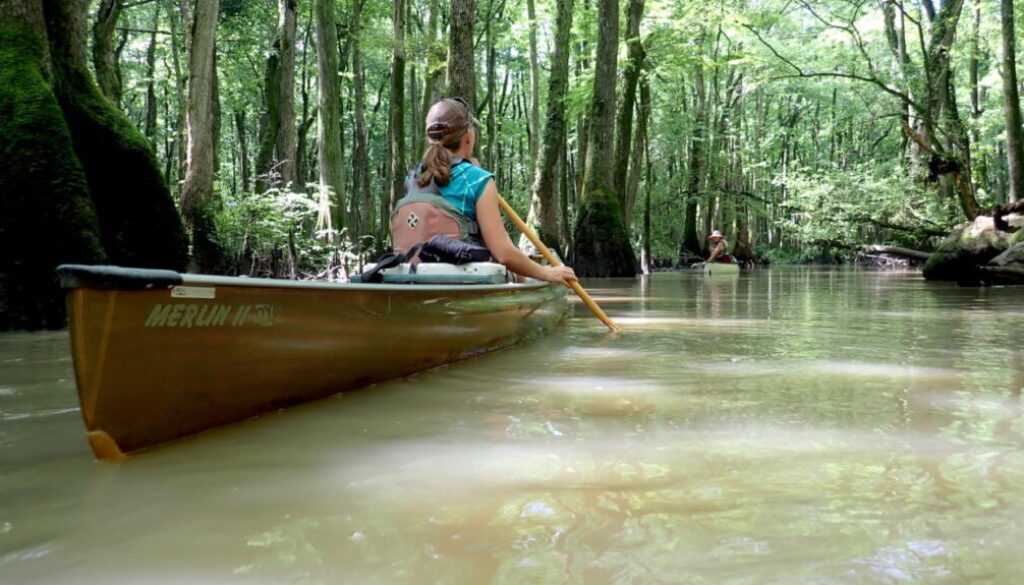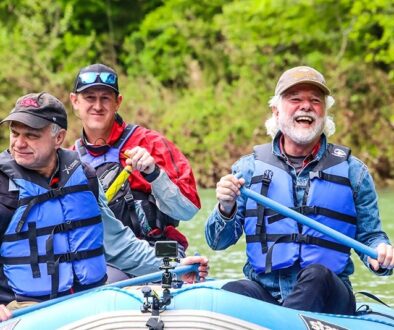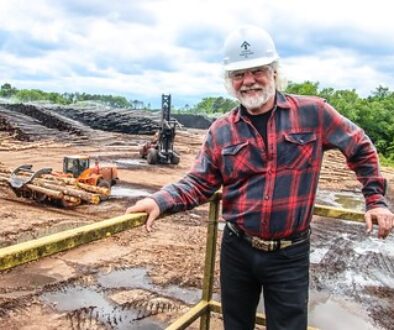Exploring and Protecting the Arkansas Bayou
Heavy rains seemed to wash away my plans for an Arkansas canoe trip, but Jeff Williams of Arkansas Wildlife magazine had another idea: Bayou DeView. This special place is not only an ideal place to explore by paddling, it also is the focus of extensive conservation efforts (and is rumored to hold one very famous bird).
Merriam-Webster Dictionary defines a bayou as a “marshy or sluggish body of water.” They are usually associated with Lousiana, but these watery ecosystems can be found throughout the Mississippi Delta and other southern Gulf Coast states from Texas to Florida.
The Louisiana French likely coined the word, bayou, from the Choctaw Indian word, bayuk, which means small stream. However, Bayou DeView, in Cache River National Wildlife Refuge and part of the Big Woods Delta, is not exactly small. A 15-mile water trail snakes through this cypress and tupelo lowland in Cache National Forest. In 2009, Bayou DeView became the focus of the conservation and birding communities when the supposedly extinct ivory-billed woodpecker was purportedly spotted there.

Though the existence of the ivory-billed woodpecker was never substantiated, it saved thousands of acres from development. It’s also part of a substantial area of focus for The Nature Conservancy (TNC) in Arkansas.
“We have protected 30 million trees and seven miles of river,” says Ginny Porter, Communications Manager at TNC’s field office in Little Rock. “Bayou DeView is a pinpoint in a much larger project. We’re reforesting land that was cleared for agriculture, but floods too often for farming now. It’s great habitat for wildlife though, and the farmer gets money for land he can’t use any more.”
Part of the restoration effort has returned rivers in the region to their natural meandering channels, instead of straight irrigation canals, which provides critical wintering water for mallards and other waterfowl. It also conserves fish, deer and many other types of flora and fauna, some unique to a bayou habitat.
“Any alligators?” I asked Jeff as our group of six launched our kayaks at the Benson Creek put-in.
“Maybe,” he replied. “We’re at the northern end of their range.”
The thought of coming face to face with an alligator gave me pause, but I dug my paddle into the opaque, glassy water any way, gulping down my anxiety.

I soon forgot about ‘gators as we headed into a maze of giant trees that grew from the water. In a bayou, water trails are like hiking trails but without an obvious trail to follow. Only small blue markers pointed the way. I could hear woodpeckers, tapping here and there as our kayaks headed deeper and deeper into the forest. I wondered if any of them might be the elusive ivory-billed one.
The trees towered above us like Gothic pillars. Green light tinged the muggy air, filtering down from the impenetrable canopy. A cacophony of songbirds serenaded us from unseen perches. The place felt prehistoric, like a pterodactyl might swoop down at any moment.
I spotted a fishing spider, the size of my hand, clinging to a tree trunk while hugging its prey to death. A few minutes later, a cottonmouth snake swam up to my boat.

After padding several miles in the flooded timber, we came to our turn-around point about three miles down the water trail. The trees gave way to pond-like Stab Lake, so named because it was long and narrow like a bayonet. After circumnavigating the small lake, we headed toward the blue diamond marking the way we had come from among the myriad of possibilities.
On the way back, we purposely veered slightly off the trail to check out a camping platform. The camping platforms scattered throughout the bayou and other parts of the delta were built with help from TNC. “Flatwater paddling through the delta is another unique reason we support this place,” says Porter, “We built the camping platforms a new way. They’re screened, so no mosquitos. It’s an opportunity to paddle and camp overnight in this landscape. Otherwise, you couldn’t sleep in it.”
Indeed not. There was not a speck of dry ground anywhere, only a few “cypress knees” that poked above the cloudy water around each of the huge, old trees. The knees helped buttress the trees in the soft, soaked, unseen substrate.
As our paddles swished rhythmically left and right on our return journey to the put-in, I marveled at my surroundings. What a unique place to kayak! “At places like Bayou DeView, we’re using recreation as a way to talk about conservation,” said Porter, “We want people to get to know nature.”



